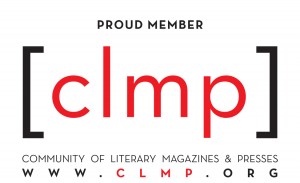by Corrine Watson
March 14, 2023
Corrine Watson is a freelance writer and editor based in Charlotte, NC and is Reviews Editor for West Trade Review. Her work has appeared in Wretched Creations and the Southern Review of Books. Follow her on Twitter @CorrineWatson6.
A Manual for How to Love Us by Erin Slaughter; Harper Perennial; 304 pages; $18.99
Erin Slaughter’s debut collection of short stories, A Manual for How to Love Us, draws the reader into the intimate spaces of women’s relationships, desires, and survival. Following two poetry collections, Slaughter’s prose often rings with the distinct tone and poetic fluidity of a writer who has mastered her craft, which draws attention to the emotion or atmosphere of each story. The collection resonates with a unique sense of femininity as Slaughter illustrates the sacrifices women make or the things they suppress for the love or the convenience of others. Shifting between the real and liminal spaces women occupy, the collection stands out in the way it highlights the magic of love and heartbreak even in the mundanity of daily life.
While marriage and romantic relationships are a significant part in the collection, there is a surprising focus on the dynamics of friendship. We see the give and take relationship that exists between friends in “The Nest” as the narrator talks to her best friend. "She asked, ‘So, what's new with you?’ Not because she was dying to know, but because she wanted to think of herself as a good friend and this is the exchange friends make: listening to someone else’s burdens as insurance that your own burdens will be listened to.” While the qualities of a “healthy friendship” are aptly illustrated, Slaughter often portrays friendships and romantic relationships with an imbalance where one party is taking and the other is suppressing their identity, desires, and opinions in order to appease the other. Although each story is unique, the characters resonate with the same tone or come off as a doormat to the people or environment they inhabit, which creates a lack of variety and perhaps a missed opportunity to highlight the character’s strength and individuality as they seem to quietly accept their submissive positions within the relationship.
As a vessel of endurance, Slaughter uses women’s bodies as a metaphor in several instances illustrating gender politics and coming of age. In “You too can Cure Your Life,” wellness guru, Melody, determines that “women's bodies were like sponges, and men’s were like cell towers; men radiated their emotions, toxic discharges - everything - outward, and women absorbed it all.” The story draws attention to the ways traditional medicine often fails women, while also adding the problematic ways influencer culture pushing alternative medicine can also cause harm. While unlikable, Melody illustrates the gender and social politics around women’s bodies as something meant to bear burden and endure pain without complaint. This sentiment is reiterated in “Instructions for Assembly,” where the narrator grows up in fear of what her body is capable of. Whether intentional or not, the story reads as speculative as the narrator states that everyone has a bird inside of them, perhaps caged within their ribs. But the women in her family also have smoke in their hearts and her mother instructs that, “We can’t let too much of what’s inside out, or else it’ll burn up everything.” This highlights how girls are taught to suppress their emotions and desires from a young age because it’s better to quietly let your inner bird choke on the toxic smoke building up inside of you then let your emotions erupt outward and expose your destructive powers. When she first notices her own smoke filled heart, the narrator is terrified as she realizes that “I could never again control what my body did without me. Worse, I could never tell anybody ever about how scared I was or how bad I felt or ask for help. I just had to keep going along like nothing was wrong.” This plays on loss of innocence and coming-of-age tropes but maintains a refreshing nuance by focusing on the narrator’s feeling of losing control of her bodily autonomy as well as the heartbreak of feeling silenced and unseen as women often are when it comes to pain as they are dismissed as weak or dramatic.
A Manual for How to Love Us may not offer much instruction on how the women in these stories want to be loved, but it grapples with the ways women pour their love into others. There is a sense of loss and longing within each story as the characters navigate their relationships and identity, but as they end there is a crescendo of enlightenment where the women in these stories seem to take ownership of their identities in personal private ways. Slaughter draws on the mundane and often harsh realities where love requires work and is in itself, heartbreaking, but endures for better or worse. And within the spaces of longing, sacrifice, and endurance, the intuitive reader can find the answer, that women want to be loved with the same grace and devotion they offer to those around them.
©2023 West Trade Review
__________________________________________________________________________________________________________________________________________________________________________
__________________________________________________________________________________________________________________________________________________________________________
__________________________________________________________________________________________________________________________________________________________________________
__________________________________________________________________________________________________________________________________________________________________________
__________________________________________________________________________________________________________________________________________________________________________
The Sacrificial Nature of Women’s Love in Erin Slaughter's A Manual for How to Love Us
FICTION REVIEW
Stay Connected to Our Literary Community. Subscribe to Our Newsletter
Image by MART PRODUCTION from Pexels




